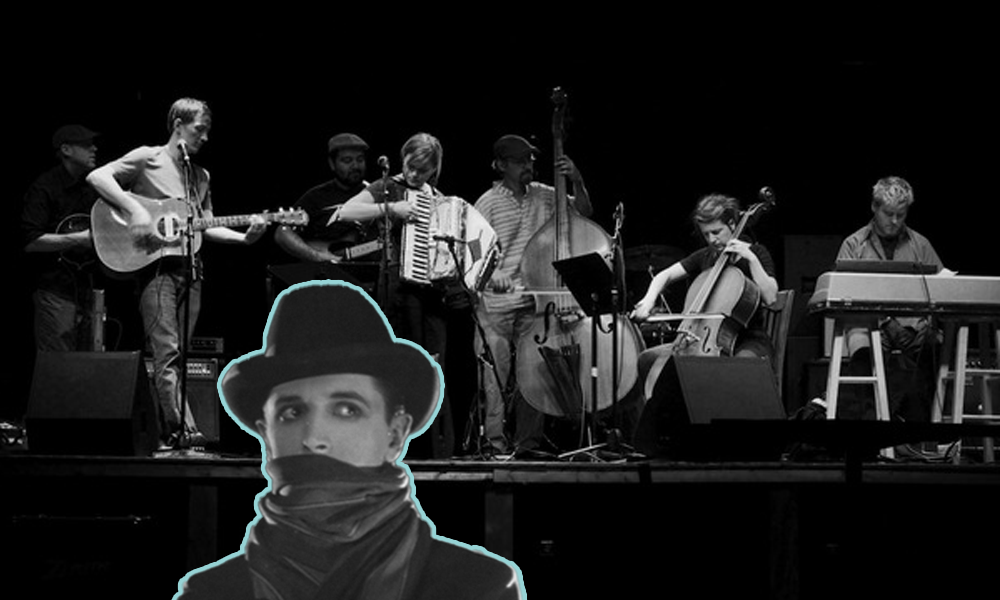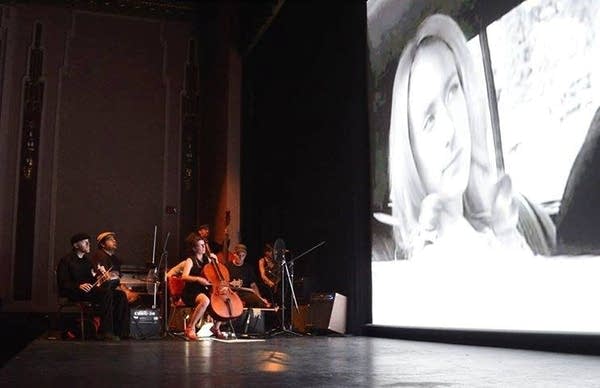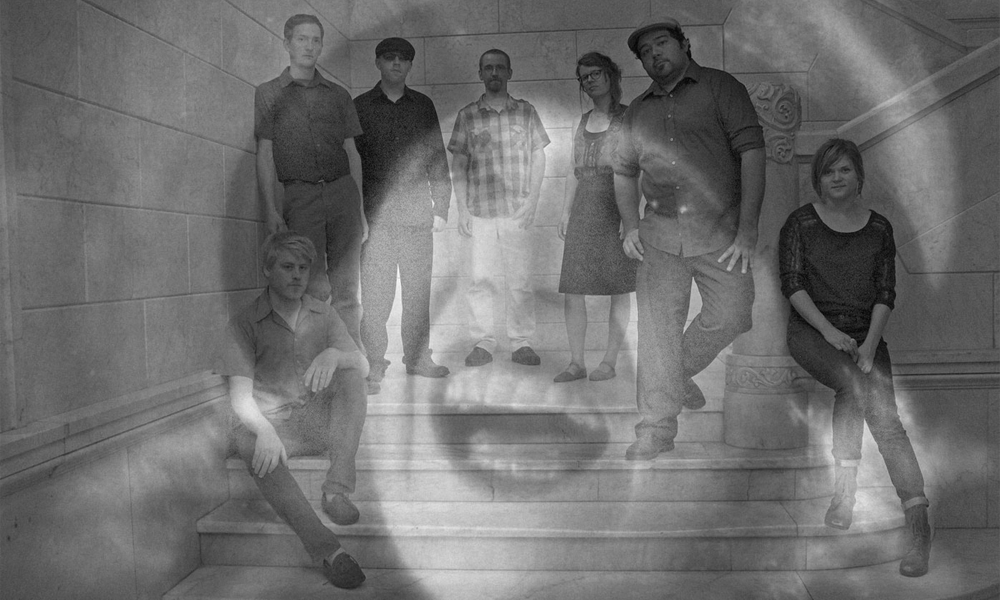| Chris Polley |

The Lodger plays at the Heights Theater on Thursday, March 28. Learn about this rare screening and other films at trylon.org.
This was how it all began, really—music that’s performed, visuals that are projected, and never a word is uttered. Dating back to the first public presentation of the works of the Lumière brothers in Paris back in 1895, musical accompaniment to a film exhibition was performed by the pianist Emile Maraval.1 Most people think what it must have been like for the members of that audience to sit in awe as they watched the first flickers of light on a screen make factory workers scuttle and horses gallop, but imagine Maraval as the intermediary, plunking away on the ivories in the background as a new novelty came to life that would give birth to one of the world’s most enduring art forms. With the advent of recorded sound that could be synced with moving images a few decades later, though, live music in the movie theater fell out of favor as filmgoers flocked to “talkies” around the globe. But it didn’t die forever.
The power of cursory internet research traces back the newest wave of this magical marriage of staged sound and celluloid to 2006 when Alamo Drafthouse in Austin, TX (the now-chain’s original flagship cinema and only location at the time) recruited Houston string quartet Two Star Symphony to compose and perform a new score for a screening of the 1920 silent classic The Cabinet of Dr. Caligari, directed by Robert Wiene.2 From there, the practice of mixing the old and the new, the live and the recorded, caught on with reimagined score performances, including pianist Paul Lewis soundtracking G.W. Pabst’s foundational Pandora’s Box in Bristol circa 20073 to the Vancouver Symphony Orchestra recreating a score for F.W. Murnau’s horror prototype Nosferatu in 2009.4 With the popularization of post-rock (Explosions in the Sky, Mogwai, Godspeed You! Black Emperor) over the decade prior or so, soon many alternative musicians joined the live score effort, with Dean Wareham of 90s indie rock legends Galaxie 500 scoring the experimental works of Andy Warhol in Pittsburgh (which was then recorded and put out on DVD)5 and the noisy Texas outfit My Education both performing alongside screenings of Murnau’s iconic romance Sunrise: A Song of Two Humans and releasing it as a full-length album in 2010.6

Musicians and film programmers in the Twin Cities jumped into the scene not long after in 2011 with folk-pop band Dark Dark Dark unveiling a live score for Fritz Lang’s 1928 thriller Spies as part of the Walker Art Center’s Summer Music & Movies series.7 That same year, bassist Eric Struve and the rest of the eclectic Americana ensemble The Poor Nobodys brought their unique sound to the Trylon, accompanying the Douglas Fairbanks silent adventure flick The Black Pirate. They’ve gone on over the past 13 years to compose and perform for showings of films old and new, silent and not, from Victor Sjöström’s 1917 Swedish revenge tale A Man There Was at the Winona Arts Center last year8 to local filmmakers Crist Dahl and Chris Delisle’s Lynchian nightmare Panacea at the Twin Cities Horror Fest in 2015[9]. Struve spoke with Perisphere about the band’s preparation for next week’s performance of an updated score for Alfred Hitchcock’s serial killer melodrama The Lodger: The Story of the London Fog at The Heights Theater, which they last performed an iteration of back in 2013 at the Trylon, though a planned 2020 performance for the same film was interrupted by the COVID pandemic too.
What can one expect on March 28 at Minnesota’s oldest operating movie house in Columbia Heights? “Me on upright bass, Christa Schneider on cello, Andy McCormick on musical saw, Chris Hepola of the Cactus Blossoms on keys, Paul Fonfara of Painted Saints on guitar and clarinet, Chris Duba on electric mandolin, and Ryan Billig on drums,” Struve rattled off as if it was a standard grocery list and not an impressive arsenal. “And some of those are not played simultaneously—we’ll be switching instruments.” A former member of roots rockers Pert Near Sandstone, Struve went on to emphasize the wide-ranging influences of his bandmates and him that coalesce to create Poor Nobodys’ singular sound: “Jazz, classical, synth and electronic music, acoustic—it’s soundscape-y [and] a mix of a lot of flavors, [plus an] element of improv. It’s not usually scored out to a tee, though some parts are, [but there is an] element of people interjecting what they are feeling [for] spontaneity.” The bassist and spokesperson for the band then outlined the process of preparing a live score for the theater in a similar matter-of-fact fashion: “Write at home, get together, write charts, record demos, come up with a big pool of music, and start placing it using computer audio workstations, [and pairing music] with a shot to see if it resonates with what’s going on.”
This meticulous consistency is matched by an ever-changing lineup of members throughout the band’s tenure. “We have six players. Or maybe seven? Let me just count here,” Struve said followed by a long pause. “Yeah, I think it’s seven people.” There is also an elasticity and free-flowing nature to the Poor Nobodys that seems to be part of what makes their relaxed yet consummately professional approach to live film scoring so welcoming and approachable. “It’s always been a collaborative effort,” Struve continued. “Sometimes certain people write more than others or direct the flow of what’s going on more than others.”

No matter who takes the helm during a given movement, though, the hallmarks of an affecting, powerful score are constantly on Struve’s mind: “A dynamic presentation [where] some parts are intricate, some parts are minimal—thick, colorful, and dense sometimes, or simple, bleak, and stripped down [other] times.” Recalling a personal favorite from their past repertoire, the band-picked Russian socialist sci-fi epic Aelita: Queen of Mars from 1924, Struve said the Poor Nobodys are always looking for “something that’s [particularly] cinematic and musically challenging [that] would be an interesting project, something with a lot of ups and downs.” In fact, the collective is facing quite the feat right now prepping their score for The Lodger right on the heels of another they did just last month for Ernst Lubitsch’s 1925 adaptation of Oscar Wilde’s Lady Windermere’s Fan (1925). “There were [fewer] ups and downs, [as it was] more of a soap opera, so that was its own challenge,” Struve said.
Thanks to the Poor Nobodys and so many other acts, we film nerds (and those of us who double as local music fanatics) are a decade-plus into an embarrassment of riches when it comes to repertory film screenings featuring live musical backing. In truth, it’d be a mistake to sign off this look back (and forward) at Twin Cities musicians participating in the prismatic, arguably underappreciated tradition of live scoring without celebrating a few other essentials: first and foremost are the accordion-centric stylings of Dreamland Faces (featuring McCormick of the Poor Nobodys), who have dozens of credited scores both original and reimagined, live and recorded, dating back to even before the mid-00s re-popularization of live music and film exhibition, including several performances at the Trylon.10 Additionally, Schneider of Poor Nobodys also plays with the Curse of the Vampire Orchestra, known for their live interpretation of Nosferatu’s score, which they just performed locally at the Granada Theater last month. There is also the annual Film Score Fest in St. Paul, where Minnesotan composers and filmmakers combine forces to create short films with live orchestral accompaniment.11 There are also exciting and boundary-pushing film-and-music performances happening in the DIY punk and alternative scene, including looping, distorted bass-and-drums duo Falcon Arrow soundtracking an 80s Japanese wrestling championship match at SolSta Records in St. Louis Park earlier this year.
What comes next, and what possibilities are conjured up, will surely only continue to be a feast for the senses, bringing together art forms and artists, music lovers, and moviegoers in many more artful, human ways—not just with expensive technological advances in the multiplex like laser IMAX, Dolby sound, or D-BOX haptics. The cinematic experience can be amazing and awesome while still remaining simple and old-fashioned, even in 2024.
Footnotes
1 Kathryn Kalinak. Film Music: A Very Short Introduction. New York: Oxford Academic, 2013. 2.
2 Marc Savlov. “At The Alamo Downtown: Two Star Symphony Does ‘The Cabinet of Dr. Caligari.’” The Austin Chronicle (November 3, 2006).
3 Paul McGann. “Opening up Pandora’s Box.” The Guardian (September 7, 2007).
4 John Lucas. “Vancouver Symphony Orchestra serves up Nosferatu’s soundtrack of horror.” The Georgia Straight (October 28, 2009).
5 Dean Wareham. “Scoring Warhol’s Screen Tests.” BOMB (June 21, 2009).
6 Patrick Caldwell. “Joy and tears with My Education’s score for ‘Sunrise.’” Austin American-Statesman (September 1, 2012).
7 Jordan Hansen. “Dark Dark Dark meets Fritz Lang.” MinnPost (August 15, 2011).
8 Johanna Rupprecht. “The Poor Nobodys Performing Live Score with Film A Man There Was.” River Arts Alliance (January 23, 2023).
9 Matthew A. Everett. “‘Panacea’ with The Poor Nobodys at the Twin Cities Horror Festival.” Twin Cities Daily Planet (October 28, 2014).
10 Jenna Ross. “Treasures of Twin Cities film scene, musical duo Dreamland Faces returns after studio fire.” Star-Tribune (August 31, 2021).
11 Ross Raihala. “Film Score Fest offers 16 new, locally made short films with a live orchestra providing the music.” Pioneer Press (June 7, 2023).
Edited by Finn Odum
